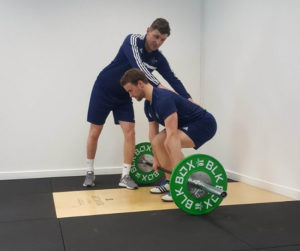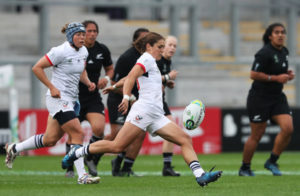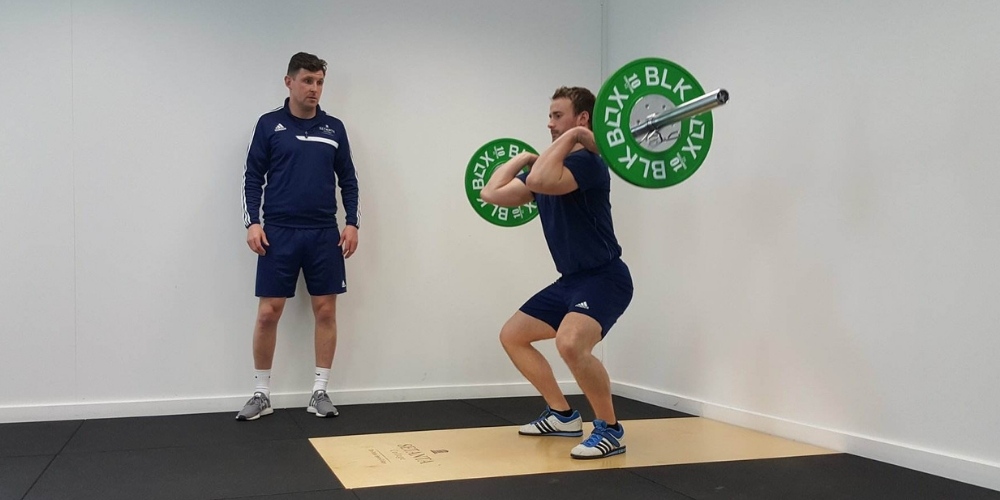Olympic weightlifting isn’t just for elite athletes. The clean, jerk, and snatch are great ways to teach movement and coordination under load. When coached and performed correctly, they contribute to fitness and natural movement patterns in ways most exercises don’t.
The Olympic lifts challenge strength, power, speed, balance, and even cardio when performed in sequence. Especially with the advent of CrossFit, functional movement training, and bringing athletic training to general populations, learning these lifts can set you apart from the masses.
Yet, there is an entire Olympic sport based off of doing the Clean and Jerk and Snatch effectively. Therefore, they can’t be taken lightly, and there are a lot of technical areas to critique. Practice doing them yourselves and learn the external and internal feedback cues to give clients. Once you’ve got it down, and choose the right moments to program them, these three lifts put you in a different category as a coach.
The First Pull

Tutor Greg Bennett instructing the First Pull positioning
The First Pull is basically a deadlift with varied grip and slightly lower hip height. It starts with a good set up, making sure the bar is positioned over mid-foot, and the weight of the entire lift (that’s you, and the barbell) is balanced on that same spot. I won’t go into all the details of core engagement, spine-in-line, such of a deadlift. But here are a few quick tips on the first pull:
● Go Slow – don’t rush it, as you’re trying to stay as tight as possible to set up your explosive second pull.
● Keep your knuckles down – this will ensure a solid connection with the bar and limit any breaking at the wrists.
● Keep your chest up – this is a bit different than a traditional deadlift and helps overcorrect any forward momentum.
● Pull the bar towards you as you lift – we want to keep the weight as close to the body as possible for maximum force transfer.
The Second Pull
What I recommend for anyone learning is to start here, with a hang clean/snatch pull.
It’s probably the least technical of the variations and sets up the execution for the main lift. The barbell should sit about mid-thigh when gripped overhand for a clean, and in the hip crease for a snatch, with the shoulders down and back. Start in the power position, with knees slightly bent and hips engaged as if you were about to jump in the air. When ready, set the hips back slightly, weight in the mid-foot, and let the bar come just above the knee. Quickly transition into a jump as you shrug your shoulders to your ears. For a high pull, unlock your elbows and let the bar travel high towards your chin.
90% of the power is coming from the legs, as triple extension is the basis of jumping. There just happens to be a barbell in your hands as you’re doing it. Get as tall as possible as you come on to your toes and at the very height of your jump, use the shrug to gain a bit of extra pull.
The Clean
Often learning hang pulls that can be enough for beginners to develop explosive power, much like a squat jump. Yet in order to finish a clean, you’ve got to shoot your elbow underneath the bar to catch it just on your shoulders.
Power movements are caught in the power position – the same one you started with. It’s a tricky transition from start to finish, but with it you can throw tons of kilograms around in the blink of an eye. Progress from there into the other variations. Hang cleans end in a front squat when you drop underneath the bar in the catch. Power cleans from the floor start with a deadlift, and full cleans combine all three.
Who Should Use Them
● Anyone with the mobility and stability to jump and land in a deep squat
● Those who can safely complete a deadlift
● Clients interested in improvements in speed and power
● Clients looking for an advanced strength stimulus
● CrossFitters, athletes, weightlifters
Who should avoid them
● Anyone with limiting upper/lower body injuries
● Those whose goals are more modest, such as aging or pregnant populations, who can benefit more from time spent elsewhere
● Very early lifters/trainees
Common Variations
● Clean Pull
● Hang Power Clean
● Hang Clean
● Power Clean
● Full Squat Clean
The Snatch
A snatch is even trickier, tossing the barbell overhead and dropping underneath it in one motion. For some, snatching is easier, but for most, mobility makes it tough. Especially if you’re like me and have years of rugby under your belt. A well-executed snatch requires effective shoulder, thoracic, and hip mobility and stability.
Who Should Use Them
● Anyone with the mobility and stability to execute a weighted overhead squat
● Those who can safely complete a deadlift
● Clients interested in improvements in speed and power
● Those with time and patience to learn the technique
● Clients looking for an advanced strength stimulus
● CrossFitters, athletes, weightlifters
Who should avoid them
● Anyone with limiting upper/lower body injuries
● Those whose goals are more modest, such as aging or pregnant populations, who can benefit more from time spent elsewhere
● If you can’t overhead squat with a weight, don’t even try to snatch it.
● Very early lifters/trainees
Common Progressions and Variations
● Snatch Pull
● Hang Power Snatch
● Hang Snatch
● Power Snatch
● Full Squat Snatch
Like the clean, begin with hang power snatches to learn the movement and get comfortable catching a barbell over your head. However, the bar should start at the hip crease in the power position, brushing at the same spot when you move to snatch overhead. This means your hand positioning will be much wider.
When ready to snatch, engage the lats, keep the knuckles down, and pull the bar in towards you as you sit the hips back and lower it to mid-thigh. Simultaneously jump and shrug, as you unlock your elbows and let the bar travel past your face. As soon as it’s around chin level, punch your fists towards the ceiling and drop quickly underneath the bar. Power snatches, like power cleans, end with a slight bend in the knee in the power position. START LIGHT – like, with the bar – until you’re absolutely sure you’ve got the movement down.
From there, practice moving through all of these progressions until you get to a full competition snatch.
The Jerk
Finally, the jerk. Technically, the clean and jerk is one lift in Olympic Weightlifting. However, unless you or your clients are training for a weightlifting competition, we can treat them as separate lifts. That way, jerks can be learned from a rack or blocks to minimize fatigue.
Common Variations and Progressions
● Push Press
● Push Jerk
● Split Jerk
Who Should Use Them
● Anyone with the strength to strict press the bar without compensation
● Clients interested in improvements in speed and power
● Clients looking for an advanced strength stimulus
● CrossFitters, Athletes, weightlifters
Who should avoid them
● Anyone with limiting upper/lower body injuries
● Those who cannot sit comfortably in the front rack position for extended periods
● Those who lack the mobility to reach overhead without compensation
● Those who lack core strength to catch weight safely overhead
● Very early lifters/trainees
Before learning a jerk, start with the basics. Clients should be able to strict press the barbell before even thinking about jerking. If they can’t get a barbell overhead without compensation or using their legs, train shoulder strength and health first. They’ll thank you in the long run. Then you can put them through the jerk progressions.
For a push press, begin with the bar in the rack position. Place your hands a little wider and elbows at a more horizontal angle than a strict press. This mimics the catch of the clean and will transfer more easily to the full C&J. When ready, engage the core, dip the knees slightly outward (rather than forward), and explode through the legs as you drive the barbell overhead. Make sure your head finishes through your elbows.
Jerks can be described as push presses that you drop underneath. The catch is honestly the trickiest part of a jerk, for most. Different trainees will prefer the split jerk over the push jerk, and vice versa. The catch for a push jerk is similar to a clean or snatch – after triple extension, drop the hips rapidly and catch in the power position with the barbell overhead. However, with a split jerk, you throw one foot behind you to catch, similar to an adapted lunge stance. Regardless of which catch you use, a clean jerk ends when the lifter stands the weight up overhead.
Summary

Transferring gains from the gym to the pitch – Kimber Rozier in action for the US Eagles.
Again, I can’t emphasize enough that an entire Olympic sport is based on these lifts. Therefore, you’re not going to learn everything there is to know about the Olympic lifts in one article. Elite lifters use multiple tricks and cues to perfect their technique, and I’ve only scratched the surface of what’s possible to learn about the snatch, clean, and jerk.
To become a true expert on the matter, dive into the Setanta College programming for an extensive breakdown of each lift. And make sure you practice, practice, practice. Nothing teaches a coach about a lift like getting underneath the bar and doing it themselves.


Leave A Comment